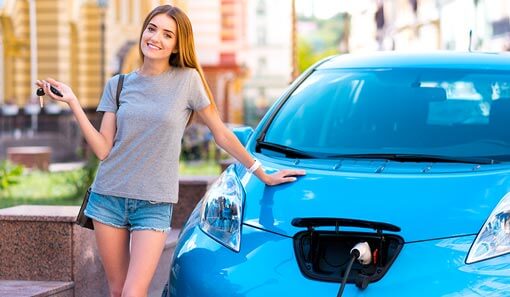From Guest Blogger Emily Folk: Ten Keys to Eco-Friendly Living

1. Double-Check Recycling Regulations in Your Area
Most communities have programs that either allow people to put their recyclables in bins and take them to the curb or bring items like paper, plastic and aluminum to dedicated centers for processing. However, not knowing the rules for your area may mean the waste management authority won’t accept recycled items. It’s a good idea to check the regulations often and make sure you understand them.
2. Switch to LED Lightbulbs
Did you know LED bulbs use up to 80 percent less energy than incandescent ones and could last as much as 25 times longer? They’re also usually brighter than non-LED bulbs. So, by changing your standard bulbs for LED options, you can cut energy usage — and your monthly bills — plus enjoy brighter surroundings and more time between burned-out bulb changes.
3. Look for Eco-Friendly Furniture
Being mindful of where your furniture comes from is another key to an eco-friendly lifestyle. Sustainable furniture options are available for almost every room of the home. Alternatively, buy things from places like Craigslist or consumer selling groups on Facebook. Then, you help the furniture have a longer lifespan and boost its usability.
4. Use Dishcloths Instead of Paper Towels
There is an ongoing debate over whether people should depend on paper towels or dishcloths in their kitchens. Some people wonder if fabric becomes a breeding ground for germs. Still, they realize the tremendous amount of resources involved in making paper towels — products consumers throw away minutes after use.
Reach for reusable cloths whenever possible. Also, keep several in a handy place such as under the sink. Then, once one becomes soiled, you can grab another and put the initial one in the laundry hamper.
5. Try a Cleaner Fuel for Home Heating
Prioritizing eco-friendliness is also crucial when choosing the best way to heat your home. Some methods bring warmth, but also pollute the air. One study found home heating pollution causes up to 10,000 deaths annually. A clean-burning fuel like natural gas or propane doesn’t create that air pollution problem, meaning it could improve the health and overall quality of life for your family.
6. Install a Low-Flow Showerhead
Showering is an everyday activity that could account for 17 percent of household water usage, or up to 40 gallons per day, depending on your family’s habits. However, if you put a showerhead bearing the WaterSense label into your bathroom, it meets Environmental Protection Agency standards for using at least a half-gallon per minute less than conventional showerheads.
7. Depend on Digital Documents When Possible
Our society’s reliance on writing paper is substantial, and that’s not ideal for the planet’s trees. Fortunately, there is a vast assortment of digital products that allow people to view, store, save, share and edit paperwork in the cloud. Trying those services means you won’t misplace documents or need to keep buying progressively bigger filing cabinets to organize the papers.
8. Eat a Diet Containing Less Meat and Dairy
A comprehensive and global study of the environmental impact of various foods found eating a vegan diet is the single most significant way to reduce one’s ecological impact concerning land and water use, greenhouse gases and more.
If you’re not ready to give up meat and dairy yet, that’s OK. Aim to cut back on those things in your diet gradually. Eventually, you may conclude you don’t even miss them.
9. Become Less Dependent on Driving
Exploring eco-friendly modes of transportation is another key to helping our planet. Think about biking or walking, depending on the length of your commute. Also, check public transportation methods. They might be more economical than fueling up your car, especially if calculating long-term costs and gas price fluctuations. When you do drive, ask if you can help neighbors get where they need to go by arranging a carpool.
10. Unplug Your Electronic Gadgets Instead of Using Standby Mode
Many electronic items have standby modes that make them quick to activate when you need them. Those settings use less power than during standard operations, but they still consume what’s often called “vampire power.” It wastes electricity and costs money, but you can prevent those issues by plugging the gadgets into power strips and cutting the supply to all of them as appropriate.
Start Supporting Sustainability Today
This list shows how you can make effective changes through small alterations in your habits. You can pick a few suggestions to attempt now, then increase your impact over time.
